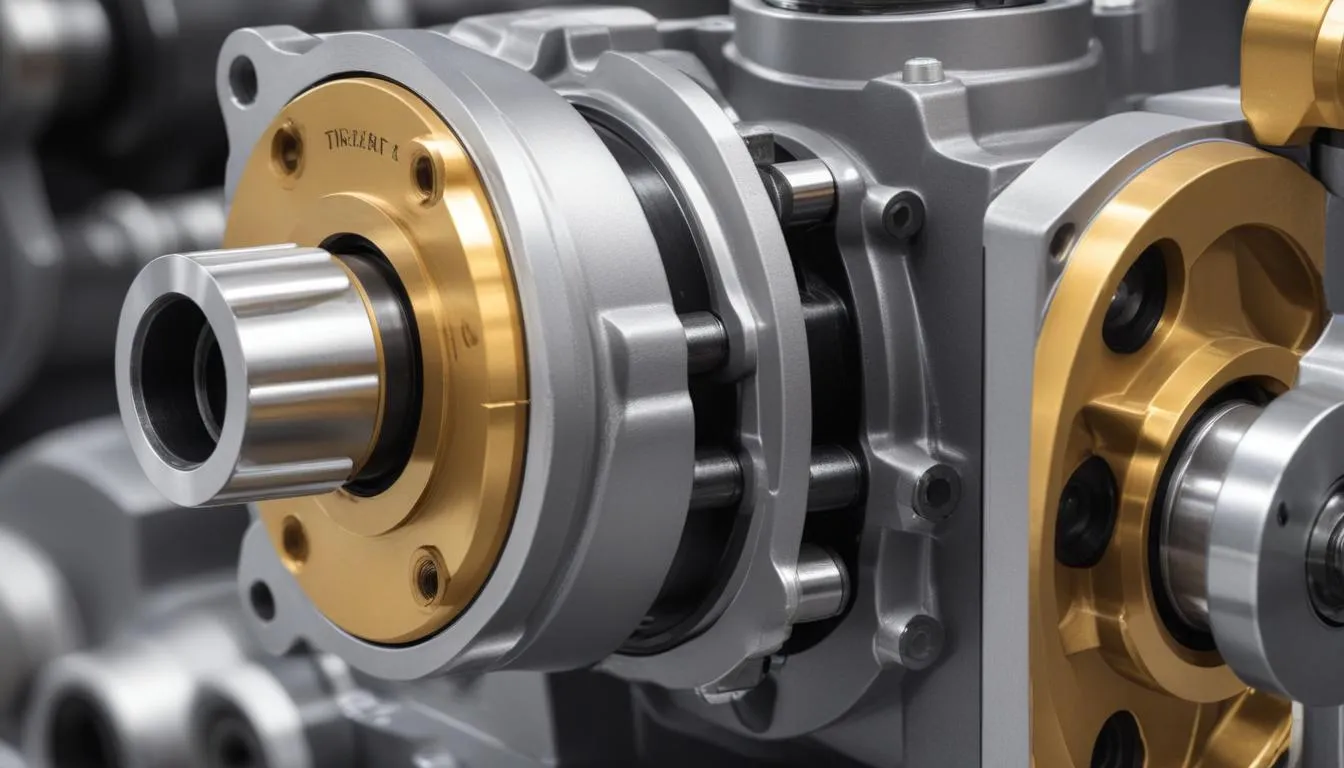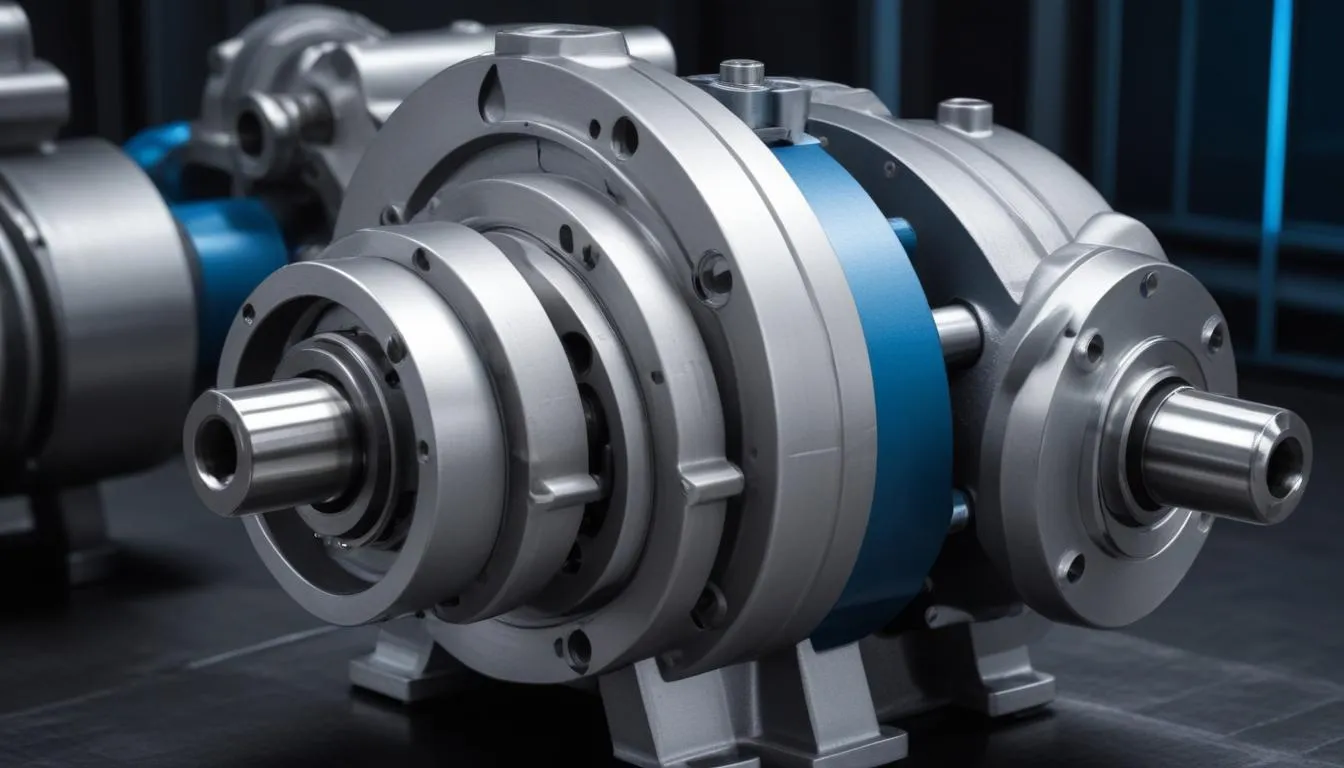 Rotary pumps are a type of positive displacement pump that moves fluid by trapping a fixed amount of it and then forcing that trapped volume into the discharge pipe. This design allows rotary pumps to handle various fluids, including viscous and non-viscous materials, making them versatile for different applications.
Rotary pumps are a type of positive displacement pump that moves fluid by trapping a fixed amount of it and then forcing that trapped volume into the discharge pipe. This design allows rotary pumps to handle various fluids, including viscous and non-viscous materials, making them versatile for different applications.
The basic components of a rotary pump include a rotating element, a stationary element, and an inlet and outlet connection. The rotating element can take various forms, such as gears, lobes, screws, or vanes. As the rotor turns, it creates a vacuum that draws fluid from the inlet. It then pushes the fluid through the pump and out through the discharge.
The operation of a rotary pump can be described in several key steps:
- Fluid Entry: The rotating action creates low pressure in the inlet, allowing fluid to enter the pump.
- Trapping the Fluid: The design of the rotating element traps a certain volume of liquid within the pump.
- Displacement: As the rotor continues to turn, the trapped fluid is forced out through the outlet, creating continuous flow.
Different types of rotary pumps operate under this principle, each suited to specific fluid properties and operational requirements. For instance:
- Gear Pumps: These pumps use interlocking gears to move fluid. They are highly effective for transferring oil and other viscous liquids.
- Diaphragm Pumps: Utilizing a flexible diaphragm to create a pumping action, they are ideal for handling corrosive or sensitive fluids.
- Progressing Cavity Pumps: These pumps feature a helical rotor that turns within a stator, making them suitable for transferring slurries and thick fluids.
The efficiency of rotary pumps is largely influenced by their design and the properties of the fluid they are moving, such as viscosity, temperature, and pressure. Commonly, these pumps are noted for their ability to provide a steady flow rate, as well as their capability to maintain good suction lift characteristics. This makes them particularly advantageous in applications where precise metering and control of fluid is crucial.
Advantages and Disadvantages
When evaluating rotary pumps, it’s important to consider both their advantages and disadvantages, as these factors can significantly influence their suitability for specific applications. Understanding these aspects helps in making informed decisions while selecting the appropriate pump for a given task.
Advantages of rotary pumps include:
- Ability to Handle Viscous Fluids: Rotary pumps excel at moving fluids with high viscosity levels. Their design allows them to maintain efficient flow even when handling thick materials like oils, creams, and slurries.
- Constant Flow Rate: Unlike centrifugal pumps, rotary pumps provide a continuous and consistent flow rate. This predictability is crucial in processes requiring accurate metering and control.
- Good Self-Priming Capability: Many rotary pump designs are capable of self-priming, which means they can start pumping fluids without needing to fill the pump with liquid beforehand. This feature is especially beneficial in applications where the pump might occasionally run dry or for suction lifts.
- Versatility: Rotary pumps are suitable for a wide range of applications across various industries. They can handle different fluids, including corrosive and shear-sensitive liquids, adapting well to diverse operational needs.
- Simple Maintenance: Generally, rotary pumps require less maintenance compared to other pump types. When designed with fewer moving parts, they can offer higher reliability and easier servicing.
- Durability: These pumps are often built with robust materials designed to withstand harsh operating conditions, promising longevity and consistent performance.
However, rotary pumps also have certain disadvantages that should be taken into account:
- Shear Sensitivity: Certain rotary pump designs, like gear pumps, may create shear forces that can damage delicate fluids. This is particularly important when handling sensitive liquids that can be adversely affected by high shear rates.
- Pressure Limitations: Rotary pumps generally have lower pressure ratings compared to centrifugal pumps. They might not be suitable for applications requiring high-pressure output.
- Size and Weight: Some rotary pumps can be bulkier and heavier than other types of pumps, potentially making them less ideal for applications with space constraints.
- Initial Cost: The upfront cost for rotary pumps can be higher than other pump types, such as centrifugal pumps, which may impact budget considerations.
- Wear and Tear: The rotating components of rotary pumps can experience wear over time, especially when handling abrasive materials. Regular inspections and timely replacements of worn parts may be necessary to maintain performance.
In summary, while rotary pumps offer several advantages such as the ability to handle viscous fluids and provide a constant flow rate, they come with potential drawbacks including shear sensitivity and size. Evaluating both the pros and cons is essential to ensure optimal pump selection tailored to specific application requirements and operational environments.
Applications and Industry Use Cases
 Rotary pumps are widely employed across various industries due to their efficient and reliable fluid handling capabilities. Here are some key applications and use cases that illustrate the versatility of rotary pumps:
Rotary pumps are widely employed across various industries due to their efficient and reliable fluid handling capabilities. Here are some key applications and use cases that illustrate the versatility of rotary pumps:
- Petroleum and Oil Industry: Rotary pumps are extensively used for transferring crude oil, refined fuels, and lubricants. Gear pumps, in particular, are favored for their ability to manage high-viscosity fluids, making them ideal for applications like oil extraction, refining, and distribution.
- Chemical Processing: In chemical manufacturing, rotary pumps handle a diverse range of fluids including corrosive chemicals, adhesives, and resins. Diaphragm pumps are commonly used in this sector, as they can safely transfer aggressive and sensitive materials without contamination.
- Food and Beverage Industry: Rotary pumps are suitable for transferring food-grade liquids such as oils, syrups, and sauces. Their design allows for the gentle handling of viscous products, ensuring that the quality of the food is preserved. These pumps often comply with strict hygiene standards necessary for food processing.
- Pharmaceuticals: In pharmaceutical production, rotary pumps are crucial for transferring delicate formulations, sterile liquids, and active ingredients. Their precise metering capability makes them ideal for applications requiring exact dosages and minimal shear forces that could alter the properties of sensitive compounds.
- Agriculture: Rotary pumps are utilized for transferring liquid fertilizers, pesticides, and herbicides. These pumps can handle varying viscosities and provide the steady flow necessary for efficient application, enhancing productivity in modern farming practices.
- Water and Wastewater Management: In water treatment facilities, rotary pumps are instrumental in moving sludge, chemicals, and other waste materials. Their ability to handle thick, viscous fluids makes them essential for effective wastewater treatment processes.
- HVAC Systems: In heating, ventilation, and air conditioning (HVAC) systems, rotary pumps help circulate specially formulated fluids used for thermal regulation. They ensure efficient energy transfer in water heating and cooling applications.
- Textile Industry: Rotary pumps are used in processes such as dyeing and finishing, where they transfer viscous dyes and chemical solutions. Their reliability and consistent flow are crucial for maintaining uniform quality in fabric treatments.
The adaptability of rotary pumps to various industries illustrates their importance in fluid handling processes. Their capability to function effectively with a wide range of fluids, from thick oils to delicate chemicals, makes them indispensable in many manufacturing and processing environments. Different types of rotary pumps can be selected based on the specific needs of an application, ensuring that performance, efficiency, and fluid integrity are maintained.